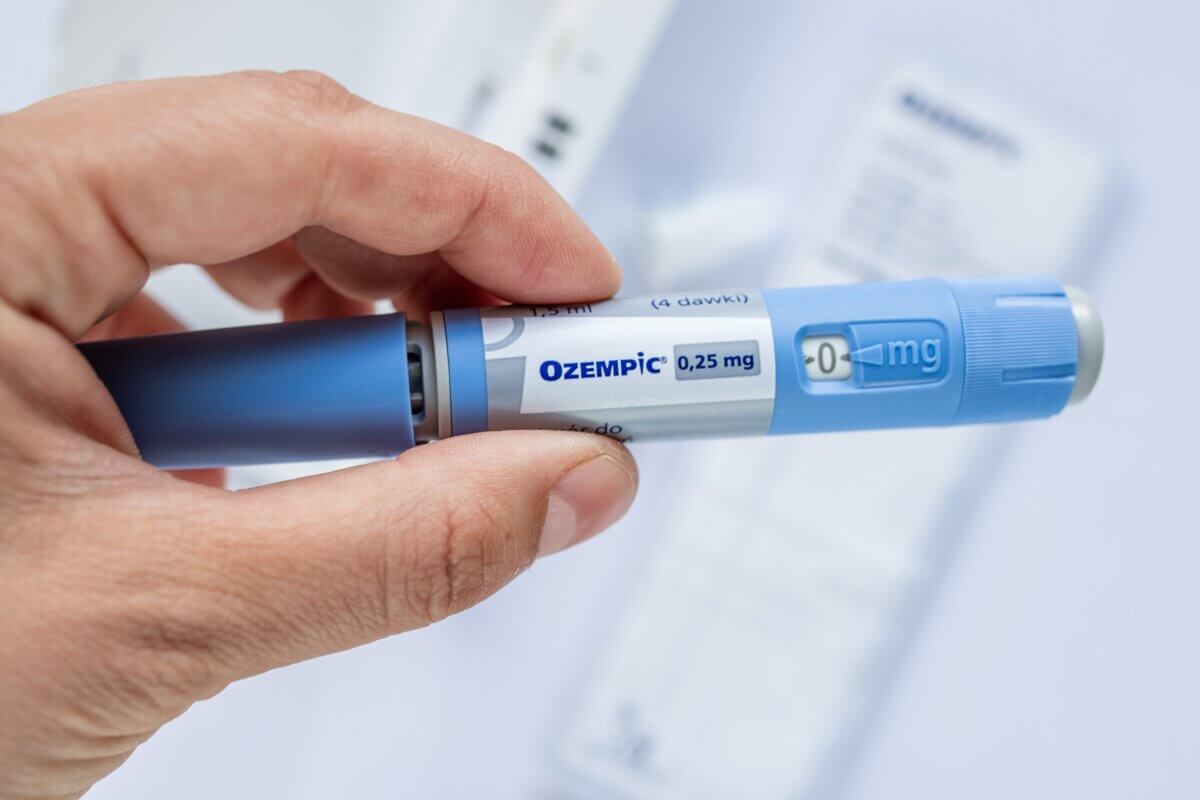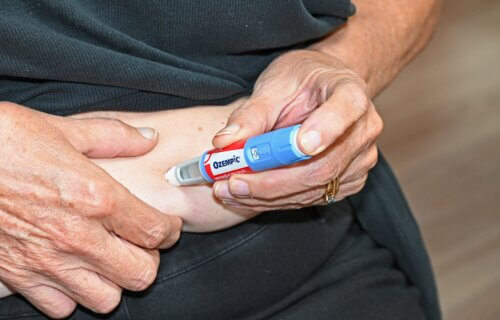Ozempic, and similar drugs developed for treatment of Type 2 diabetes, have a lot in common with the old saying “the good, the bad, and the ugly.” Good is the serendipitous finding that the drugs promote significant weight loss. Bad are the side-effects and the cost. Ugly could be developing “Ozempic butt,” or “Ozempic face” as well.
The diabetes and weight loss treatment, in a class of drugs called glucagon-like peptide 1 (GLP-1) analogs, acts as an appetite suppressant. With the very welcome, almost effortless weight loss, however, comes loose, sagging skin. As the pounds disappear, there is a loss of volume and a decrease in skin elasticity. The face may look gaunt, with the appearance of rapid aging – not a welcome effect.
Ozempic butt isn’t really a side-effect of the drug; it’s an association. Rapid weight loss due to any intervention will cause loss of fat tissue. The skin has less tissue to cover, making it sag.
Ozempic (semaglutide) is getting most of the attention among drugs of this type and is attached to the unattractive phrases such as “Ozempic face” and “Ozempic butt,” but there are other medications with a connection to the same conditions. Wegovy (also semaglutide) and Mounjaro (tiraepatide) will not spare your butt or your face from sagging.

Wegovy is currently the only drug of this class which the U.S. Food and Drug Administration (FDA) has approved for treatment of obesity. Ozempic and Mounjaro, FDA-approved for management of Type 2 diabetes (or prediabetes) only, are being liberally used off-label for weight loss. The stampede to get these drugs, and use them for weight loss, surpasses even the wild charge to doctors’ offices the day Viagra became available. It has caused a shortage of the drug for patients using it for diabetes management after its 2021 approval.
All these drugs stimulate insulin release from the pancreas when blood sugar levels are high and keep food in the stomach longer. People are less hungry and lose stored fat. The drugs can reduce the risk of heart disease, stroke, and diabetes.
Skin elasticity depends on numerous factors including age, lifestyle habits, hydration, genetics, and collagen levels. Collagen is a protein found in connective tissue, skin, tendon, bone, and cartilage. It provides structural support to tissues and is part of many essential body functions and processes.
Age is the most significant factor for loss of skin elasticity. The speed and amount of weight lost also affect skin elasticity. Rapid weight loss makes it more difficult for the skin to remodel itself to the shape of underlying tissue. Similar effects occur after bariatric surgery.
The face is especially vulnerable to showing weight loss because it doesn’t naturally have much fat and loses fat with aging. Any part of the body which has greater volume at higher weights is vulnerable to sagging skin, such as the thighs and breasts.
Managing excess skin
Sagging skin is primarily a cosmetic concern, but that can take a big toll on quality of life for some people. Substantial amounts of excess skin can also be a medical issue. There may be skin breakdown or irritation, rashes, hygiene problems, or activity limitations.
Weight loss schedules for Wegovy last about 18 months. Slowing down weight loss by using medication at a lower dose may be helpful for limiting sagging skin. It allows the skin more time to accommodate to changes in tissue volume.
A healthy lifestyle while losing weight helps protect against Ozempic butt or Ozempic face. There is an acronym for it:
- Nutrition
- Exercise
- Water
- Sleep
Getting more sleep and adequate hydration are both associated with successful weight loss and may reduce the problem with loose, sagging skin.
You might also be interested in:
- From Ozempic to Wegovy, here’s what you should know about ‘anti-obesity’ drugs
- Obesity drug semaglutide helps over 70% of obese teens lose weight
- Best Skin Tightening Cream: Top 5 Firming Lotions Most Recommended By Experts

